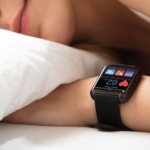More research on the effectiveness of health-related apps and wearables is emerging, although many limitations exist. These technologies are often incorporated and tested within a larger multicomponent behavioral intervention, which makes it difficult to interpret the individual effects of the technology. Even when looking at the effectiveness of the multicomponent behavioral interventions as a whole, the results do not always favor the use of technology to modify behaviors.6-8 Likewise, the results are inconsistent regarding the use of an app or wearable alone in the absence of other components of a behavioral intervention.
Within primary care, recommendations to use a smartphone app were insufficient to produce weight change.9 Conversely, the use of an armband physical activity monitor and website demonstrated potential to initiate significant weight loss.10
Discussion
An ethical question is raised regarding whether a clinician should be recommending that patients use these technologies to assist with making behavior changes before the efficacy of the devices has been evaluated. With varying results, a clinician must consider the costs and benefits of making recommendations to use these apps and devices. In the instances where the app or device is effective, the patient sees numerous health benefits (e.g., weight loss, increased self-confidence, increased physical activity). To the contrary, when the app or device is not found to be effective, the potential for harm may exist for the patient.
Additionally, the cost of these devices may be a burden for those of lower socioeconomic status. Not only does this form of treatment require the patient to purchase the device or app, but also to have a smartphone with Internet capability and adequate cellular data for app usage. Therefore, the clinician must take care in assessing the patient’s current resources prior to making a costly recommendation to prevent a further divide between the standard of care available for patients of all demographics.
The effectiveness of technology to increase physical activity, improve diet and produce weight loss remains unknown. Although the recommendation of these tools could be an appropriate first line of treatment, a failed attempt at behavior change could be detrimental to patients’ self-efficacy and could hinder future attempts. Further, even though more older adults are using smartphones and other technologies, the learning curve may be daunting for some patients. With increased burden and technology challenges, engagement with these tools will decline or be nonexistent. The last concern with existing apps and wearable devices is that they are not specifically tailored toward an arthritic population.
